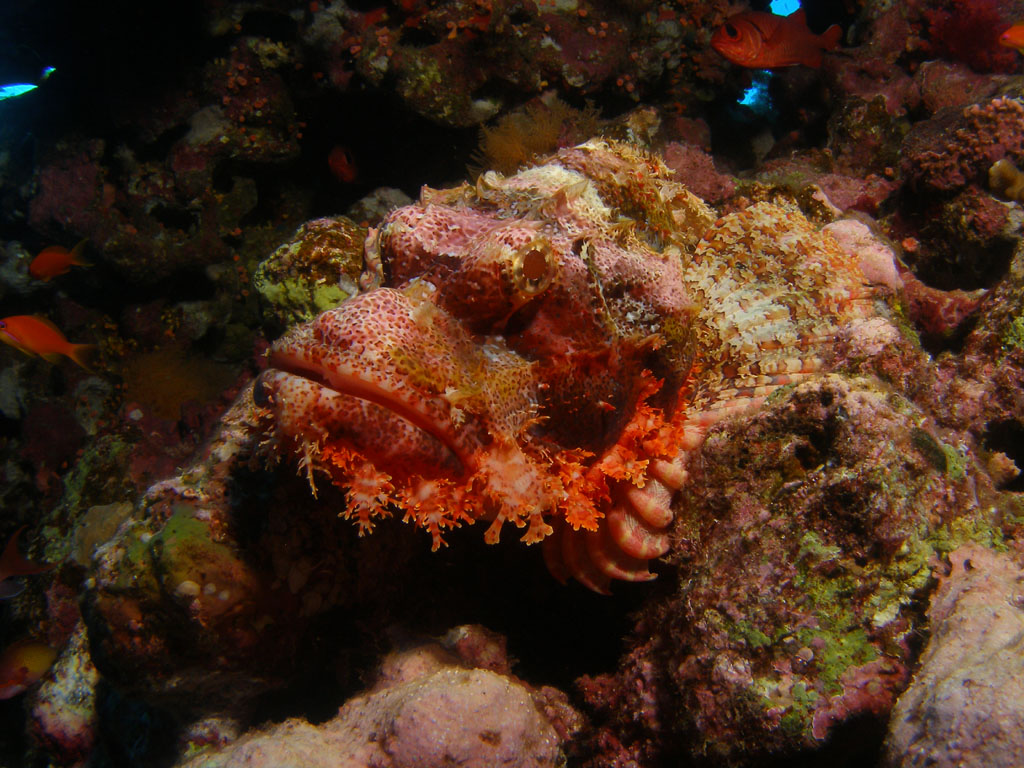


Taken on Elphinstone Reef in the Egyptian Red Sea by Tim Nicholson.
The scorpionfish is one of the most venomous fish in the world. It has several spines linked to venom glands. The poison causes severe pain and paralysis.
From earliest times fishermen have believed in the efficacy of the liver and flesh of scorpionfish applied as an antidote to the wound from the animal. In his 1943 book, Sting-Fish and Seafarer, H M Evans recommends injecting crystals of permanganate of potash to alleviate a scorpionfish sting. This is not found in your average diver's first aid kit these days. Instead immerse the wound in very hot water and get medical help as soon as possible.
The scorpionfish is extermely well-camouflaged. It can change colour to match its background and has many "tassles" masking its outline. This Tassled Scorpionfish lives from 1 to at least 35 m in the Red Sea and Indo-Pacific. Lacking a swim bladder, it remains on or near the bottom. Lethargically, the fish waits for prey to pass by then opens its lower jaw and sucks its victim in.
Not many animals prey on the scorpionfish, its venom deterring most. A fully grown octopus though does not seem to be affected by the spines and will envelop and eat the scorpionfish.
Further Reading
Coral Reef Guide Red Sea by Ewald Lieske and Robert Myers, Collins, 384 Pages, Paperback (2012)